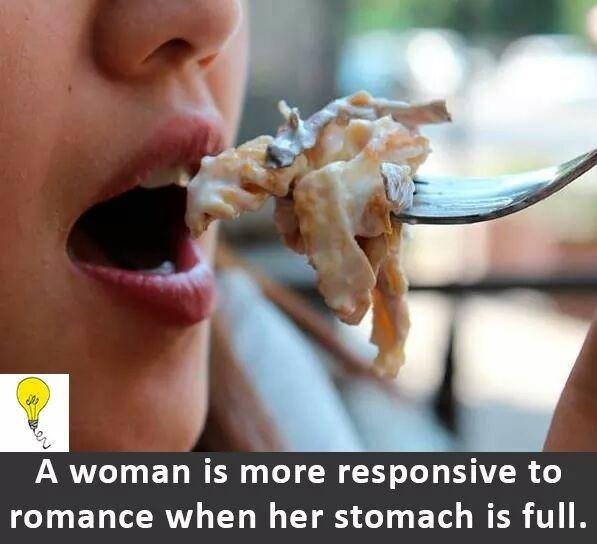[FACTS ABOUT WOMAN] Did you know that? #12

Women’s brains respond more to romantic cues on a full stomach than an empty one, according to a new study that explored brain circuitry in hungry vs satiated women. This included both historical dieters and those who had never dieted.
“We found that young women both with and without a history of dieting had greater brain activation in response to romantic pictures in reward-related neural regions after having eaten than when hungry,” said first author Alice Ely, Ph.D. who completed the research while pursuing a doctoral degree at Drexel.
Ely is now a postdoctoral research fellow at the Eating Disorders Center for Treatment and Research, part of the University of California, San Diego School of Medicine. Michael R. Lowe, Ph.D., a professor in the College of Arts and Sciences at Drexel University, was senior author.
Ely said the findings are contrary to several previous studies, which showed that people typically demonstrate greater sensitivity to rewarding stimuli when hungry. Such stimuli may include things like food, money, and drugs.
“In this case, they were more responsive when fed,” she said. “This data suggests that eating may prime or sensitize young women to rewards beyond food. It also supports a shared neurocircuitry for food and sex.”
The small pilot study grew from Ely’s earlier work investigating how the brain changes in response to food cues. Specifically, she and her colleagues examined whether the brain’s reward response to food differed significantly in women at risk for future obesity (historical dieters) compared to those who had never dieted. All of the study participants were young, college-age women of normal weight.
In that study, the researchers found that the brains of women with a history of dieting responded more dramatically to positive food cues when fed as compared to women who had never dieted or who were currently dieting.
“In the fed state, historical dieters had a greater reaction in the reward regions than the other two groups to highly palatable food cues versus neutral or moderately palatable cues,” she said. Highly palatable cues included foods like chocolate cake; neutral cues were things like carrots.
Ely said the data suggests historical dieters, who longitudinal studies have shown are more at risk for weight gain, may be predisposed by their brain reward circuitry to desire food more than people who have not dieted.
“Based on this study, we hypothesized that historical dieters are differentially sensitive — after eating — to rewards in general, so we tested this perception by comparing the same groups’ brain activation when viewing romantic pictures compared to neutral stimuli in a fasted and fed state,” she said. Testing was done using MRI imaging.
While both groups’ reward centers responded more to romantic cues when fed, the historical dieters’ neural activity noticeably differed from the non-dieters in one brain region that had also turned up in the earlier food studies.
“The pattern of response was similar to historical dieter’s activation when viewing highly palatable food cues, and is consistent with research showing overlapping brain-based responses to sex, drugs, and food,” said Ely.
The new study is published online in the journal Appetite.
Source: Drexel University